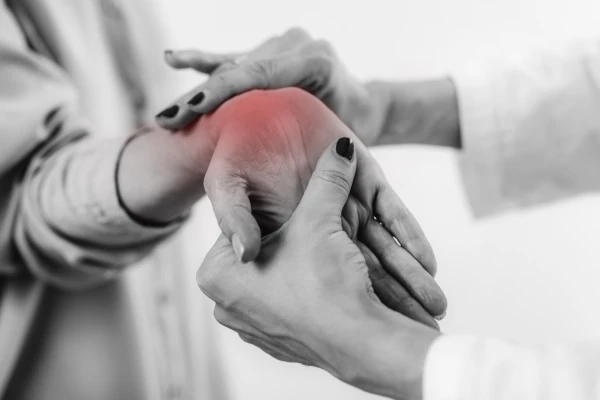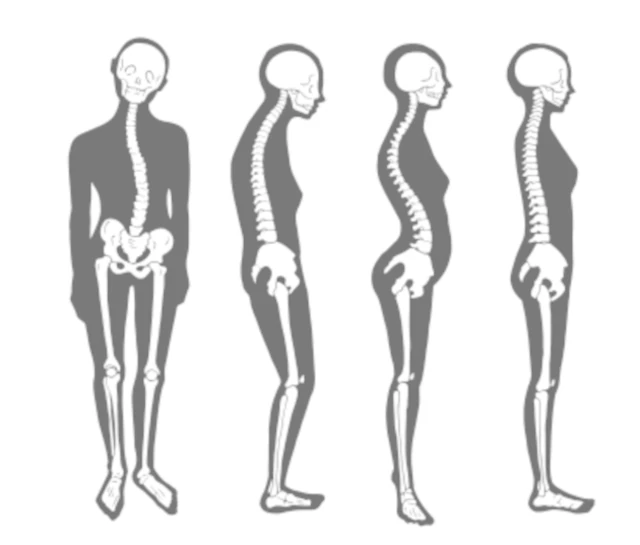
What Is the Thyroid?: Function, Types, Causes, Diagnosis, Symptoms & Treatment
- Dr. Sakshi Grover (MPT)
Connect with our expert physiotherapist for personalized physiotherapy advice.
What Is the Thyroid?
The thyroid is a small, butterfly-shaped gland located at the base of your neck. It plays a vital role in regulating your metabolism, energy production, body temperature, and even heart rate. The thyroid achieves this by producing hormones—primarily thyroxine (T4) and triiodothyronine (T3)—that influence nearly every cell in your body.
Functions of the Thyroid Gland
- Regulates metabolism and energy levels
- Controls body temperature
- Influences heart rate and blood pressure
- Supports brain development and mental health
- Regulates menstrual cycles and reproductive health
Types of Thyroid Disorders
Thyroid disorders are classified based on whether the gland is producing too much hormone, too little, or has structural abnormalities. Understanding the specific type helps guide accurate diagnosis and treatment.
1. Hypothyroidism (Underactive Thyroid)
This is one of the most common thyroid disorders. The thyroid gland fails to produce enough hormones, slowing down body processes.
- Common in women, especially over age 60
- Most often caused by Hashimoto’s thyroiditis (an autoimmune condition)
- Symptoms include fatigue, weight gain, constipation, and depression
2. Hyperthyroidism (Overactive Thyroid)
In hyperthyroidism, the thyroid gland produces too much hormone, speeding up body functions.
- Graves disease is the leading cause
- Symptoms include rapid heartbeat, weight loss, nervousness, and heat sensitivity
3. Goiter (Thyroid Enlargement)
A goiter is a visible enlargement of the thyroid gland, which can result from iodine deficiency or autoimmune diseases.
- May cause difficulty swallowing or breathing in large cases
- Can occur with both hypo- and hyperthyroidism
4. Thyroid Nodules
These are lumps that form within the thyroid gland. Most nodules are benign, but some can be cancerous or produce excess hormone.
- Often found during routine neck exams or imaging
- May require biopsy or ultrasound to evaluate
5. Thyroid Cancer
A less common but serious condition. Thyroid cancer typically presents as a painless lump and is more common in women.
- Treatment often involves surgery, radioactive iodine, or thyroid hormone therapy
- Most types are highly treatable when caught early
Common Causes of Thyroid Disorders
- Autoimmune diseases: Hashimoto’s thyroiditis (hypothyroidism) or Graves’ disease (hyperthyroidism)
- Iodine deficiency or excess
- Thyroid nodules or tumors
- Radiation therapy to the neck or head
- Genetic factors and family history
Symptoms of Thyroid Disorders
Underactive Thyroid (Hypothyroidism):
- Fatigue and sluggishness
- Weight gain
- Cold intolerance
- Dry skin and brittle hair
- Depression and memory issues
Overactive Thyroid (Hyperthyroidism):
- Unexplained weight loss
- Increased heart rate and palpitations
- Heat intolerance
- Anxiety and irritability
- Tremors and sweating
Diagnosis of Thyroid Conditions
Diagnosing thyroid conditions typically involves a combination of the following tests:
- Blood tests (TSH, T3, T4 levels)
- Thyroid antibody tests
- Ultrasound imaging
- Radioactive iodine uptake (RAIU) scan
- Fine needle aspiration (FNA) biopsy (for nodules)
Treatment
Treatment depends on whether the thyroid is underactive or overactive:
For Hypothyroidism:
- Daily thyroid hormone replacement therapy (e.g., levothyroxine)
- Regular monitoring and dose adjustments
For Hyperthyroidism:
- Antithyroid medications (e.g., methimazole)
- Radioactive iodine therapy
- Beta-blockers to control symptoms
- Surgical removal of the thyroid (in severe cases)
The Role of Physiotherapy in Thyroid Management
While physiotherapy does not treat the thyroid gland directly, it plays a supportive role in managing physical symptoms related to thyroid dysfunction.
- Fatigue management:
Gentle exercise programs improve energy levels and reduce lethargy.
- Weight management:
Tailored strength and cardio exercises aid in preventing weight gain (common in hypothyroidism).
- Muscle and joint pain:
Manual therapy, stretching, and mobility exercises help relieve stiffness and discomfort.
- Balance and coordination:
Particularly in hyperthyroid patients experiencing tremors or weakness.
A physiotherapist can also help develop a long-term exercise routine suited to thyroid-related limitations.
Conclusion
Understanding thyroid function is essential for identifying and managing both hypothyroidism and hyperthyroidism. Early diagnosis, proper treatment, and supportive therapies like physiotherapy can significantly improve quality of life.
For more thyroid health resources, visit American Thyroid Association.
Connect with our expert physiotherapist for personalized physiotherapy advice.



